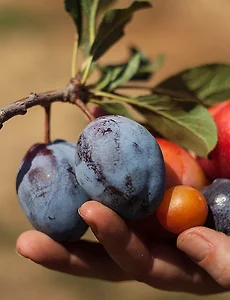 과일, 너트, 포도를 위한 노아의 방주
Seen from the air, the USDA National Clonal Germplasm Repository for Tree Fruit, Nut Crops and Grapes is a tidy, unremarkable, roughly 70-acre patchwork of varying shades of green and brown. From the ground, it’s a lush, hot, endless expanse of tangled vineyards and sun-blasted groves, alive with chirping birds and buzzing. It contains two each of hundreds of species that ar..
2014. 10. 16.
과일, 너트, 포도를 위한 노아의 방주
Seen from the air, the USDA National Clonal Germplasm Repository for Tree Fruit, Nut Crops and Grapes is a tidy, unremarkable, roughly 70-acre patchwork of varying shades of green and brown. From the ground, it’s a lush, hot, endless expanse of tangled vineyards and sun-blasted groves, alive with chirping birds and buzzing. It contains two each of hundreds of species that ar..
2014. 10. 16.